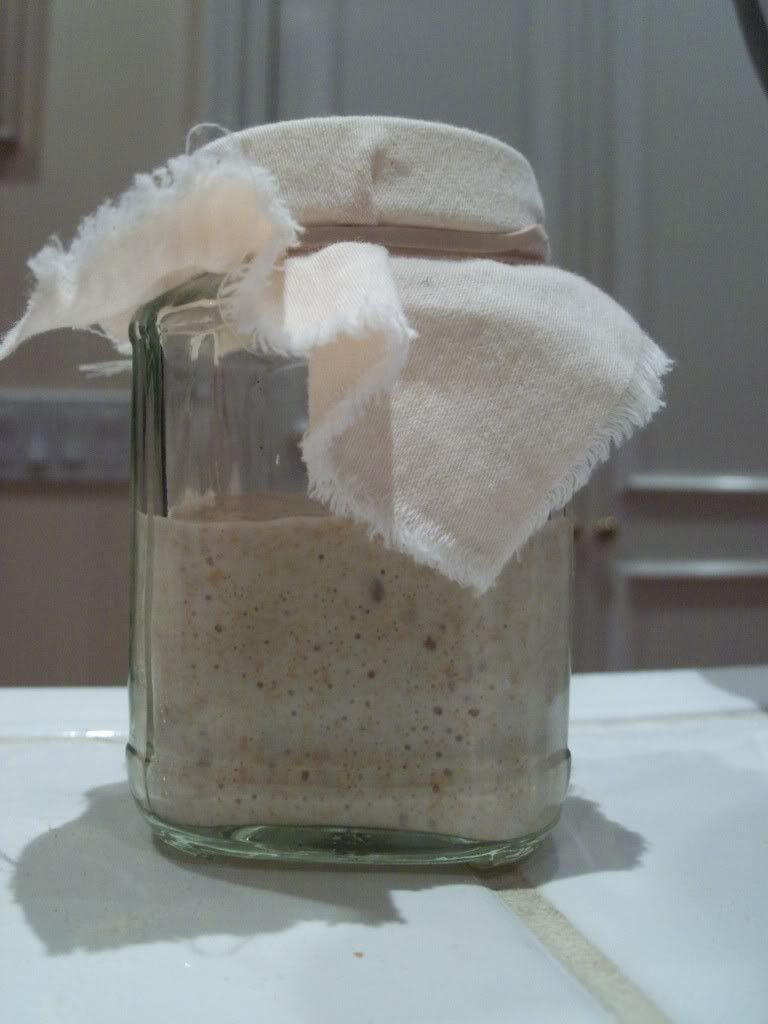 |
| Tartine Starter |
To make the levain:
- 1 tablespoon mature starter
- 50g all-purpose flour
- 50g whole-wheat flour
To make the final dough the next day:
- 100g levain
- 400g water (75 degrees F)
- 350g whole wheat flour
- 150g all-purpose flour
- 10g salt
Next, mix in the salt into the dough, bit by bit, pinching the dough over it, and incorporating the rest of the water bit by bit, until all of the salt and water are incorporated. Then follow the instructions from Step 5 onward.
Results tomorrow.
Endnotes
- Another step-by-step recipe for Tartine bread can be found on Martha Stuart's site if you haven't gotten around to buying the book
.
- Mature sourdough starter means starter that has been established and is able to double every 4-10 hours with adequate feeding. For most starters, this seems to take just about a week. I made my original starters using this method from Bread Cetera. It took a little longer for mine to reach maturity. My oldest starters are now just over a year old.
- The float test involves taking a spooful of dough and ascertaining whether it floats in a little bit of water. If it sinks, it's not ready. If it floats, it's ready. It should smell sweet like overripe fruit.
No comments:
Post a Comment